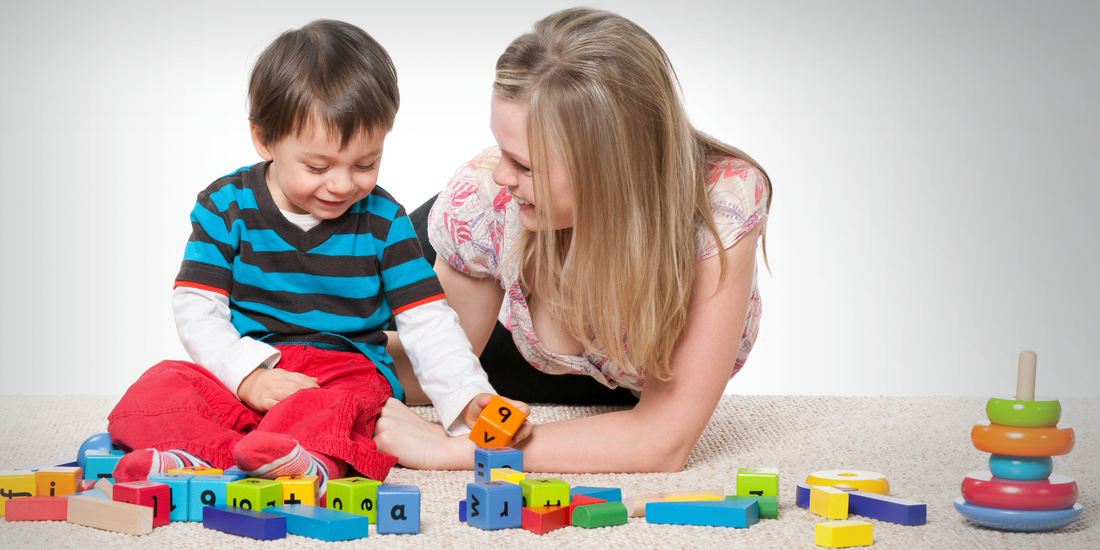Some children are naturally drawn to learning letters, while others may not begin to learn letter identification until they are a bit older. Either way, there are easy and fun activities parents can engage children in to expose them to letters in a playful way.
Learn
Basic Concepts (for 2-3 Year Olds)
- Children at this age demonstrate a wide range of knowledge and interest in letters.
- Before learning letters, children should know colors and basic shapes; these are building blocks on which the foundation of letter identification rests.
- At age 2, you’ll have the most success with letter identification and shouldn’t expect your child to know letter sounds (i.e., associate a letter by the sound it makes), though some children may.
- Letter identification is just one component of pre-reading skills. Other pre-reading skills which often follow letter identification include:
- Rhyming
- Print awareness (letters represent words that have meaning)
- Ability to re-tell simple sentences
- Phonological awareness (ability to hear and recognize sounds in words)
- Interest in reading
- Concepts of print are also important skills, but are not usually secure until approximately age 5. For example:
- Which text matches which pictures
- Knowing which way we turn pages in a book
- Directionality of text going from left to right
- Single best predictor of first-year reading achievement is a child’s knowledge of and ability to recognize and name uppercase and lowercase letters of the alphabet. But by no means is this the expectation at age 2.
- Research shows that only 38% of children between ages 3 and 6 recognize all of their letters. Most will not start to name and sound the letters of the alphabet until approximately age 4.
Just Remember
Do
Core Marbles
Embed letter-learning activities into your regular routine; children will absorb as much as they are ready for.
- Learn letters in names
- Play with letters
- Look for print in context
- Read, read, read
- Belt it out – Sing your letters
Easy Things You Can Do
- Learn letters in names – Begin letter-learning with letters in your child’s name. The personal connection typically results in greater interest. Expand this to include letters in the names of your family members.
- Sign your child’s name on a piece of their art and point out the letters you’ve written.
- Put letters spelling your child’s name on the bedroom or refrigerator door – wherever your child will see them often – so you can talk about them.
- Play with letters – Use toys with tactile letters to expose your child to letters in their name. At this age, rather than using the entire set, select those in your child’s name and focus on them. “Your name starts with S, this is an S, SSSSSam!”
- Phonics is the association of sounds with letters. Though we don’t expect children at this age to know letter sounds, when speaking to your child about letters, focus on the sound, too. “Mama starts with m, mmmmmm, m.”
- Phonics instruction is a large component of Kindergarten, so don’t worry about mastery – exposure is just great for a 2-year old.
- Phonics is the association of sounds with letters. Though we don’t expect children at this age to know letter sounds, when speaking to your child about letters, focus on the sound, too. “Mama starts with m, mmmmmm, m.”
- Look for print in context – Point out letters and words on road signs, product packaging, and involve your child in pointing them out daily:
- Stop signs, exit signs, road signs, cereal box, shampoo bottle – there are letters all around things children use and see daily. Calling attention to them will increase your child’s awareness to the power of letters.
- Some DIY playful activities to learn the alphabet – no credit taken, we just did the hunting for you!
Common Things You Might Have Heard
- Read, read, read – Reading is the most important thing you can do with your child to build a strong foundation for letter recognition.
- Belt it out: sing your letters – Singing is a great way to learn; the more senses used, the more likely your child will remember – the ABC song, rhyming songs and songs about letters (e.g. “There was a farmer who had a dog and B.I.N.G.O was his name, oh”).
- Bonus: Try building the ABC song into your natural routine. For example, have your child sing the ABC song every time they wash their hands.
